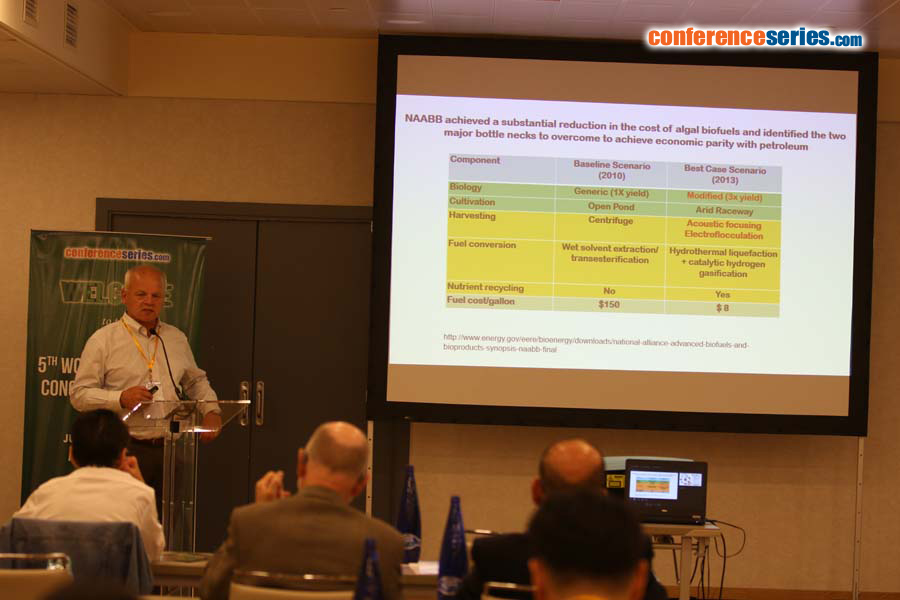
Richard Sayre
Los Alamos National Laboratory, USA
Title: Improving Photosynthetic Efficiency and Biomass Yield in Plants and Algae
Biography
Biography: Richard Sayre
Abstract
One of the more environmentally sustainable ways to produce high energy density (oils) liquid transportation fuels is photosynthetic reduction of carbon dioxide into carbohydrates and hydrocarbons and their subsequent conversion into fuels. Photosynthetic carbon capture from the atmosphere combined with bioenergy production (combustion) and subsequent carbon capture and sequestration (BECCS) has also been proposed by the recent Intergovernmental Panel on Climate Change Report as the most effective and economical way to remediate atmospheric greenhouse gasses. To maximize carbon capture efficiency and energy-return-on-investment, we must develop cropping systems that have the greatest aerial biomass yields with the lowest inputs. All photosynthetic organisms, however, convert only a fraction (< 5%) of the solar energy they capture into harvestable chemical energy (reduced carbon or biomass). To increase aerial carbon capture rates and biomass productivity it will be necessary to increase photosynthetic efficiency in plants and algae. We will discuss metabolic engineering strategies to improve photosynthetic efficiency and biomass productivity in algal and plant systems, often borrowing metabolic strategies from one photosynthetic system to transfer into another. These strategies include optimization of photosynthetic light-harvesting antenna size and the introduction of algal inorganic carbon concentrating systems into plants to increase carbon fixation efficiency and biomass yields. To date, these strategies have resulted into up to two-fold increases in biomass productivity in algae and crop yields in outdoor field trials.
References:
- Olivares J, et al. (2016) Review of the algal biology program within the National Alliance for Advanced Biofuels and Bioproducts. Algal Res. DOI: 10.1016/j.algal.2016.06.002.
- Kumar A, Perrine Z, Stroff C, Postier BL, Coury DA, Sayre RT and Allnutt FCT (2016) Molecular Tools for Bioengineering Eukaryotic Microalgae. Curr. Biotechnol. 5:93-108.
- Negi S, Barry AN, Friedland N, Sudasinghe N, Subramanian S, Pieris S, Holguin FO, Dungan B, Schaub T and Sayre RT (2015) Impact of nitrogen limitation on biomass, photosynthesis, and lipid accumulation in Chlorella sorokiniana. J. Appl. Phycol. DOI 10.1007/s10811-015-0652-z.
- Subramanian S, Barry A, Pieris S and Sayre RT (2013) Comparative energetics and kinetics of autotrophic lipid and starch metabolism in chlorophytic microalgae: Implications for biomass and biofuel production. Biotechnol. Biofuels 6: 150-162.
- Perrine Z, Negi S and Sayre, RT (2012) Optimization of photosynthetic light energy utilization by microalgae. Algal Res. 1:134-142.
- Blankenship RE et al., (2011) What is the solar energy conversion efficiency of natural photosynthesis compared to photovoltaic cells? Science 332:805-809.


